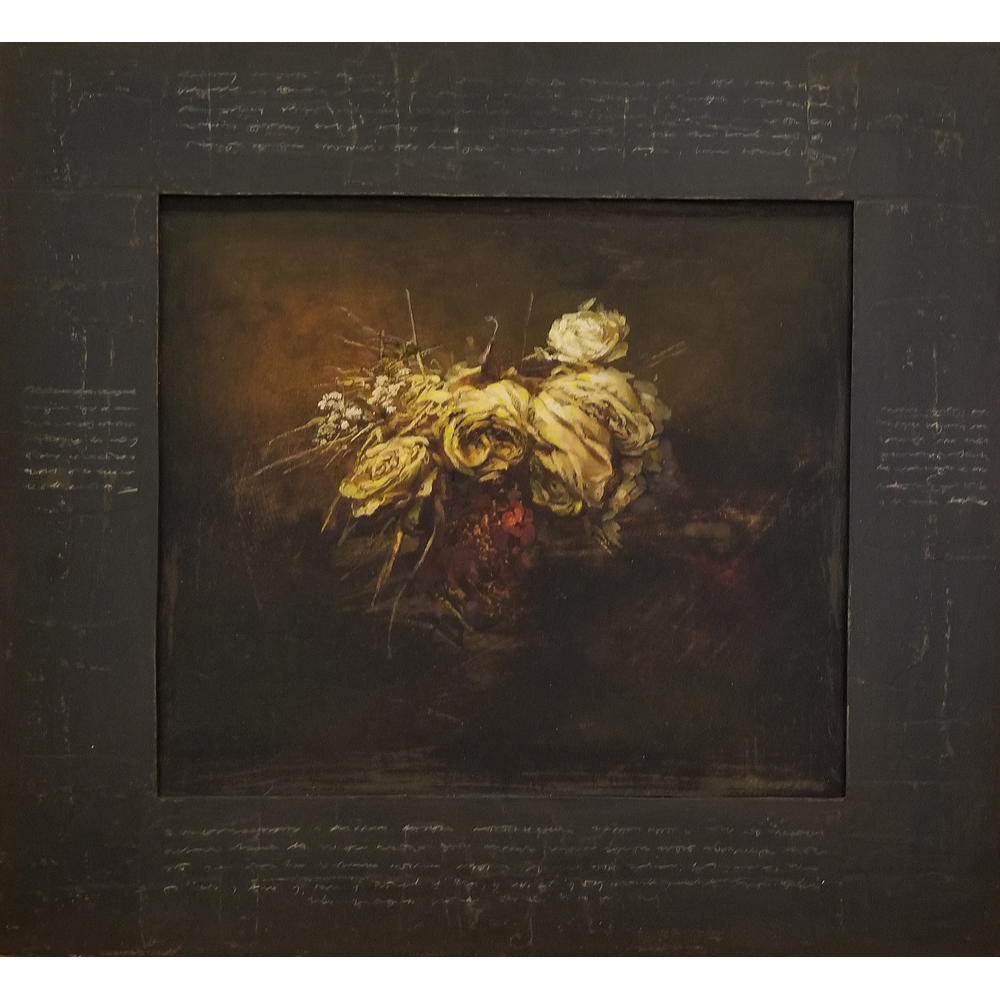Artwork Description
Igor Melnikov – Dry Flowers II
Dimensions: 18 x 20″ framed / 13 x 15″ unframed
Year: 2014
Medium: oil on panel
Igor Melnikov’s oil on panel work, Dry Flowers II, reconfigures art historical examples of still lives by juxtaposing life and death; rather than more traditional renditions exhibiting impossible bouquets and roaming insects, Melnikov’s work depicts the period of decay often not painted. With the contrast between the textured depths of the background and the brightness of the central focal point, Melnikov interjects a sense of temporal and visual fragility to the scene, as if a ray of light has fallen onto the work or Melnikov has captured the moment just before sunset.
Igor Melnikov’s works center about processes of discovery and development. After learning that the black and white images of old master works he looked at as a child were painted in color, Melnikov has oriented his work to allow viewers to attach meaning to the otherwise simple scenes. Many of his paintings portray landscapes and young children—subjects which allow viewers to adapt his visual language into individual understandings. This approach complicates traditional associations between children and innocence, suggesting that Melnikov’s subjects are at once dynamic and open to a broad range of interpretations. Melnikov’s work also focuses on emotion—reworking feelings such as tragedy and happiness. He believes the two coexist, where allowing oneself to experience happiness inexorably makes one vulnerable to tragedy. Within this, Melnikov does not define happiness as mere pleasure; rather, it is something which demands attributes such as courage and touches on wider themes including freedom, dignity, and consciousness. Melnikov’s paintings are collage-like, yet not in the traditional, material sense of the process—instead layering his own psychological explorations onto his understandings of the human condition. While his muted color palettes might appear reductive, they instead focus viewers’ attention on the figures within the work and encourage thorough readings of the detailing that remains visually available.
By Keira Seidenberg, Art History/Gender Studies student, McGill University

